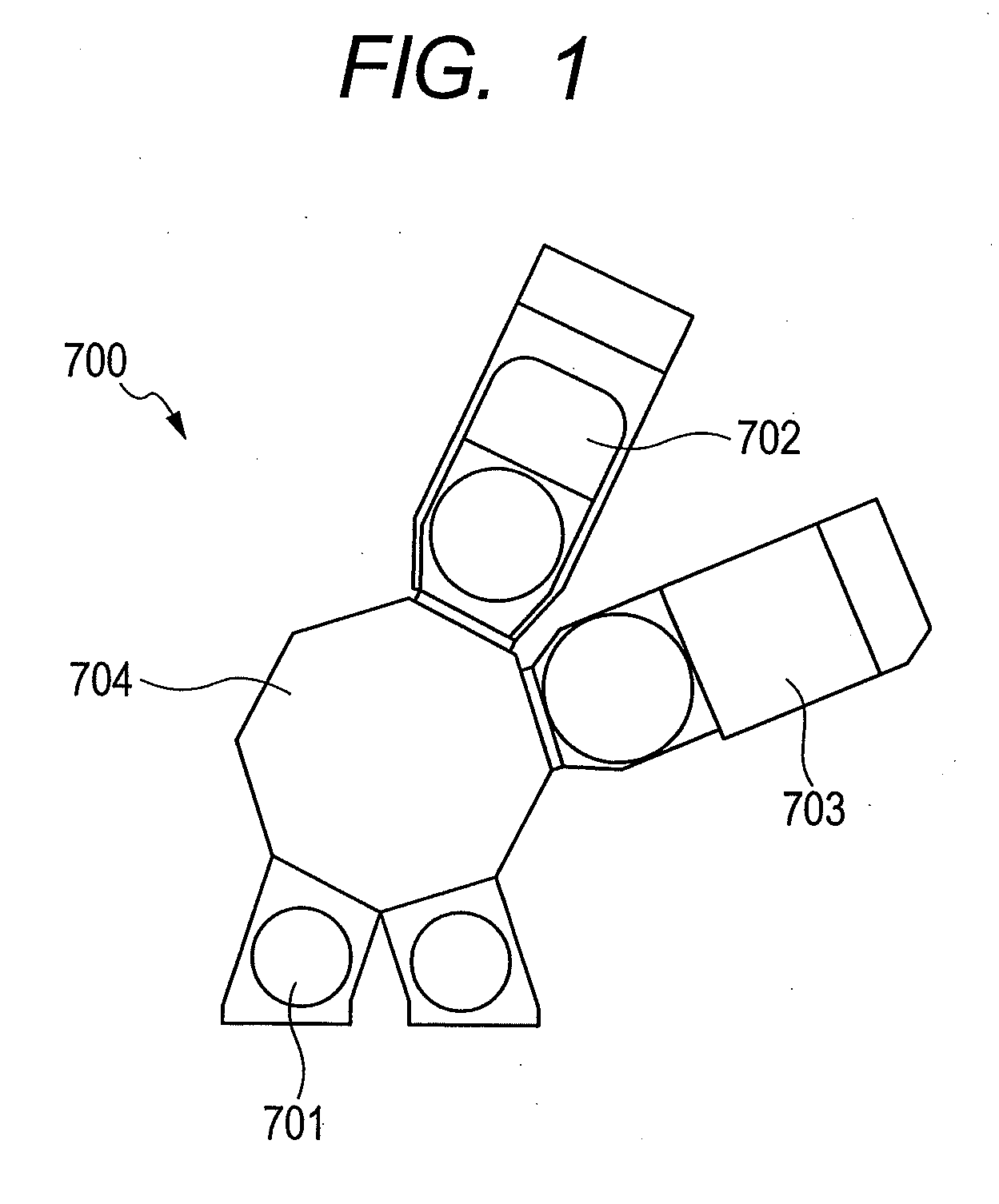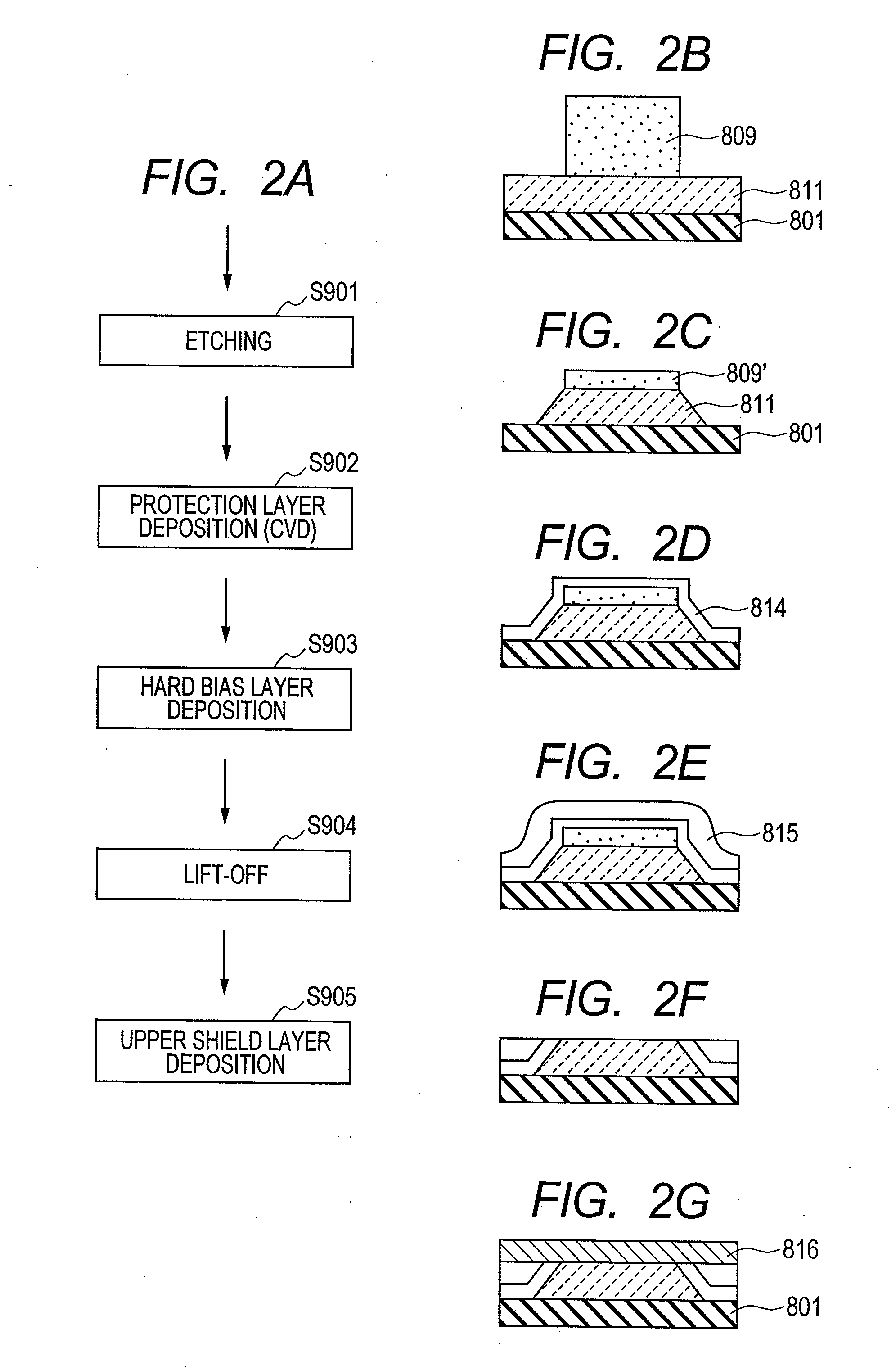Manufacturing method of magneto-resistance effect element
a technology of resistance effect and manufacturing method, which is applied in the field of manufacturing method of magnetoresistance effect element, can solve the problems of high step coverage, long deposition time, and inability to obtain insulation, etc., and achieves the effect of suppressing magnetic characteristic degradation, extending the step coverage of a formed film, and reducing the amount of material used
- Summary
- Abstract
- Description
- Claims
- Application Information
AI Technical Summary
Benefits of technology
Problems solved by technology
Method used
Image
Examples
example 1
[0076]For confirming that the present invention satisfies a requirement for electron density, an electron density measurement test of the film-deposition processing space 11 was carried out as an example using an apparatus shown in FIG. 5. Saturated ion current density was measured at a point 11 mm directly above a substrate to be processed using a Langmuir probe, for an embodiment of the present invention in order to measure the electron density of the film-deposition processing space 11.
[0077]NH3 of 500 sccm or O2 of 500 sccm and argon of 50 sccm were used for process gas and carrier gas, respectively, to be introduced into the plasma generation space 10. A power of 700 W was input to the high frequency power electrode disposed in the plasma generation space 10. The test was carried out at a process pressure of 20 Pa.
[0078]As a result, as shown in FIG. 7, the electron density flowing into the film-deposition processing space was kept equal to or lower than 1×10+7 cm−3, and the ele...
example 2
[0079]Next, a test confirming a damage reduction effect was carried out as Example 2.
[0080]In Example 2, a MOS capacitor was processed using the same apparatus under the same process condition.
[0081]As a comparative example, the same test was carried out for a capacitance coupling type apparatus without having the partition wall 20. The test was carried out under the condition; oxygen: 500 sccm, pressure: 180 Pa, and input power: 1,000 W.
[0082]The measurement was carried out at 56 points on the surface of an wafer and at an antenna ratio (area ratio of an upper electrode to a gate oxide film) of 700,000.
[0083]FIGS. 8 to 11 are diagrams showing a result of damage evaluation by the measurement of an I V characteristic of the MOS capacitor. Each of the numerical values in FIG. 8 (Example 2) and FIG. 10 (Comparative example) shows a leak current (pA) of each point, and, when the damage exists, the absolute value of the leak current in the MOS capacitor becomes larger. Further, each of t...
example 3
[0085]In Example 3, a SiN film was deposited using the apparatus shown in FIG. 5 and various kinds of advantage were confirmed.
[0086]The film deposition condition was as follows. A high frequency power of 700 W was input, and NH3 was introduced at 50 sccm into the plasma generation space 10 and mixture gas of SiH4 and Ar was introduced at 65 sccm in total into the film-deposition processing space 11. Further, the film deposition was carried out after the substrate temperature had been adjusted to each temperature condition by the heater 31.
[0087]FIG. 12 shows the temperature dependence of a film deposition rate.
[0088]While, in the ALD which is a conventional method, a film of 0.1 to 0.15 nm is formed in one cycle and only a thickness in a range of 0.6 to 0.9 nm can be deposited in a minute when the time of the one cycle is assumed to be 10 seconds, it is possible to obtain a sufficiently high deposition rate for the formation of a 5 nm or thicker protective film in the present inven...
PUM
 Login to View More
Login to View More Abstract
Description
Claims
Application Information
 Login to View More
Login to View More - R&D
- Intellectual Property
- Life Sciences
- Materials
- Tech Scout
- Unparalleled Data Quality
- Higher Quality Content
- 60% Fewer Hallucinations
Browse by: Latest US Patents, China's latest patents, Technical Efficacy Thesaurus, Application Domain, Technology Topic, Popular Technical Reports.
© 2025 PatSnap. All rights reserved.Legal|Privacy policy|Modern Slavery Act Transparency Statement|Sitemap|About US| Contact US: help@patsnap.com



